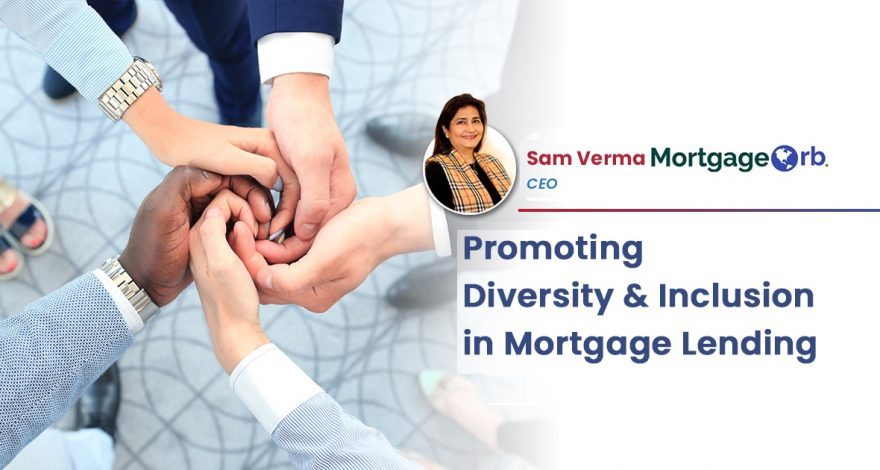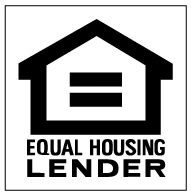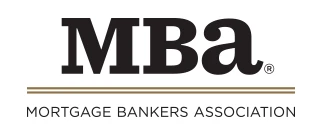Millennials now outnumber baby boomers in the U.S., according to U.S. Census Bureau projections.
Millennials are more educated than baby boomers. In addition, they are more racially and ethnically diverse. With these changing demographics, diversity and inclusion in the workplace is an increasing area of focus. inclusion and diversity in mortgage lending
While the business outlook is often clear, what remains hazy is how skills are measured and resources are evaluated. Finding the right balance for inclusiveness at the organization level – and outside – requires an increased level of awareness.
What is Diversity?
Diversity, in simple terms, is a set of characteristics that set individuals apart: It includes background, personality, life experiences and beliefs. It is what defines any individual.
Diversity is about acknowledging and respecting differences based on gender, age, race, religion, disability and sexual orientation.
Inclusion in the workplace means valuing all employees and giving them equal opportunity to access resources.
Inclusion and diversity best practices in the workplace result in the following:
- Improved skills and talents;
- Improved creativity and innovation;
- Greater employee satisfaction and retention; and
- Enhanced productivity and customer satisfaction.
This applies to all business sectors, including mortgage lending.
In the words of Christopher M. George, president and CEO, CMG Financial, “Diversity and Inclusion give way to two other words, ‘deliberate and intentional.’ Diversity isn’t accidental and being inclusive should be purposeful. It’s something you focus on.”
“Now, first of all, it’s the right thing to do – there’s no question about that,” he added. “But beyond the right thing to do, it’s good for business. And it’s good for homeownership.”
Respecting Diversity Across the Customer Base
Bringing people from different cultures and backgrounds into the workforce helps ensure that all lenders can connect with all burrowers and help them reach their goal.
According to the 2021 Home Buyers and Sellers Generational Trends Report, “Millennial buyers … continue to make up the largest share of home buyers.”
“Sixty-two percent of recent buyers were married couples, 18 percent were single females, nine percent were single males, and nine percent were unmarried couples,” as per the report. “The highest percentage of single female buyers was in the 66 to 74 age group at 22 percent. The 41 to 55 age group continues to be the most racially diverse group of buyers in 2019. Twenty-seven percent of this group of buyers identified as Hispanic / Latino, Black / African American, or Asian /Pacific Islander.”
Promoting inclusion and diversity in mortgage lending becomes more important to cater to this diverse range of customers. Employees from similar backgrounds can more easily promote the business with the target audience. Having employees with different ethnicity and cultural backgrounds helps in understanding the audience better and hence in offering custom services, for creating intuitive Web/Mobile interfaces and advertisements, identifying brokers and DSA channels.
The Role of Advertising
The rise and popularity of organizations like NAAMBA, Women with Vision, NEXT Mortgage Events, etc., have paved the way to a more inclusive environment where women can share, collaborate and learn from one another.
Mortgage lenders must respect and promote inclusion and diversity at their workplace. This begins by measuring the skills, abilities, and accepting the differences and moving out of the archaic practices and providing the employees an environment devoid of fear and discrimination.
Hiring and pay play an important role in building inclusive workplaces. This ideally begins from hiring based on competency and skills and not focusing on parameters like color, creed, race, etc. and extends to ensuring that employees performing the same jobs are paid fairly, regardless of the gender, race, and ethnicity.
A holistic environment can only be built through inclusion and diversity. Inclusion and diversity cater to both employees as well as to end-customers.
Personal Perspective
As a member of the minority community myself, I have had a fair share of challenges in establishing myself in the mortgage industry. However, it was mostly about having the courage to move out of my comfort zone and addressing some fears that had been instilled while growing up. Hard work and learning helped me face challenges head-on.
What helped me extremely is the mentorship I received. Experiencing the work culture in a female-lead organization moulded me into what I am today. I strongly believe in the power of mentoring. It is by far the most effective way to close the skill gap. As a leader, I set the precedent, and offer to be a mentor whenever needed. We cannot undermine the value of learning in building an organization that promotes inclusion and diversity. This learning curve is not limited to the employees, but also extends to our partner companies, our vendors, and any aspect of the organizational ecosystem. I make sure to point them towards the right direction and provide guidance on work-life balance as and when possible.
We have devised various approaches to promote the minority community and to set a level playing field to promote diversity. We painstakingly focused on trust-building by providing them with a psychologically safe workplace. We also put in place strict guidelines to curb any form of discrimination and subordination that may influence any employees’ growth. Affinity groups, mentoring programs, work-family accommodation policies, and unconscious bias training, are few examples of what we do. As a CEO of a leading mortgage processing firm, I focus on supporting women in the mortgage industry and in creating fair competition for all. Inclusiveness adds value to the industry as it helps in creating the right connection with the clients helps in exploring newer markets.
It has been my personal experience and observation that organizations like The National Association of Minority Mortgage Bankers of America (NAMMBA), American Mortgage Diversity Council, NEXT Mortgage Events, etc. play a huge role in promoting inclusion and diversity across the mortgage lending industry.
The work of NAMMBA, where I sit on the board, with regard to the enrichment and betterment of women and minorities who work in the real estate finance industry is commendable. The role of these organizations in creating an environment where people can work together irrespective of differences and improving work culture has been immense.
This change has helped mortgage lenders connect better with the customers and improve each buying, selling, mortgage experience – and support justifiable homeownership across different communities.
Inclusion and diversity in mortgage lending are a necessity to ensure that the performance levels match global standards – and to create an unbiased workplace that delivers the highest level of customer satisfaction.
Sam Verma is CEO at Peoples Processing.
This article was published here: https://mortgageorb.com/promoting-diversity-and-inclusion-in-mortgage-lending








